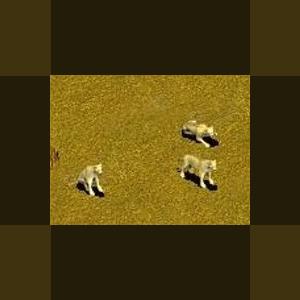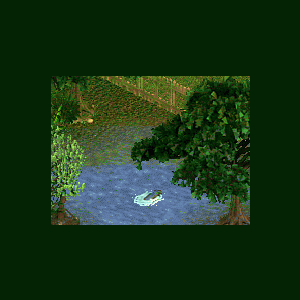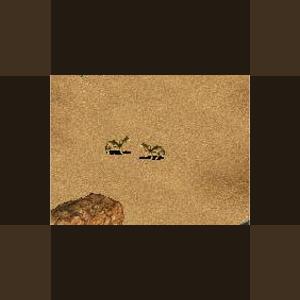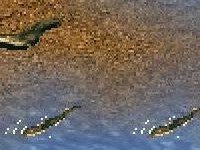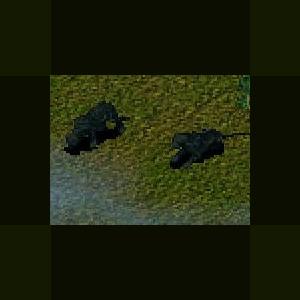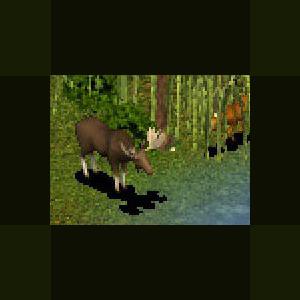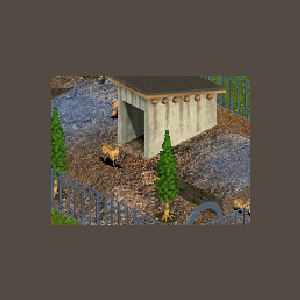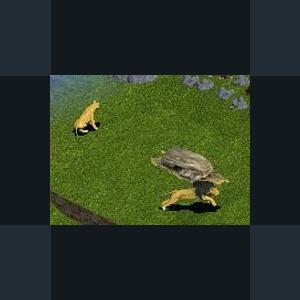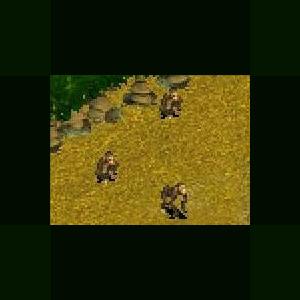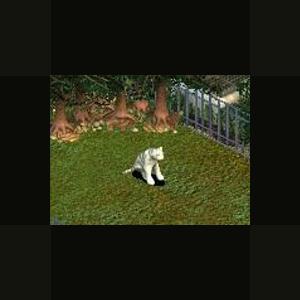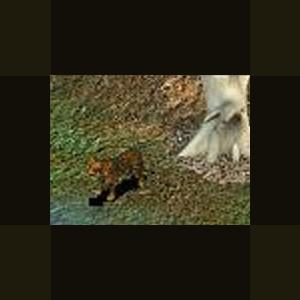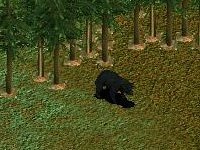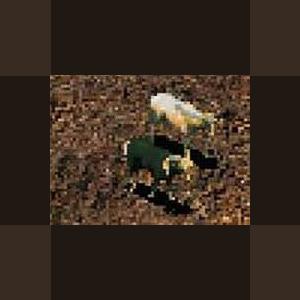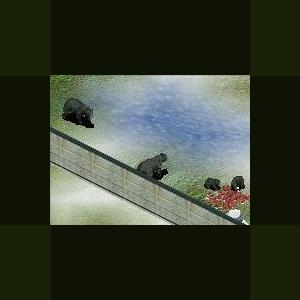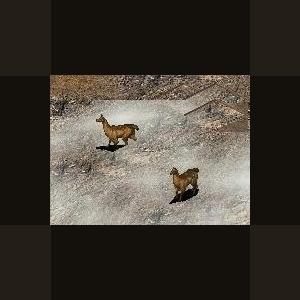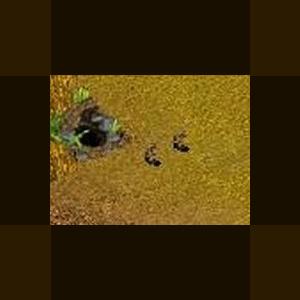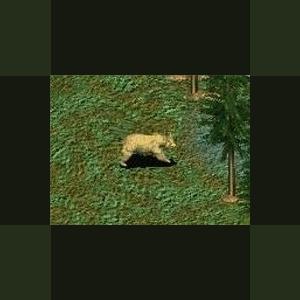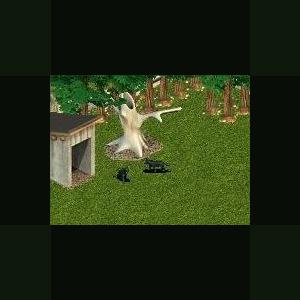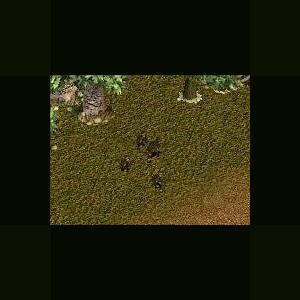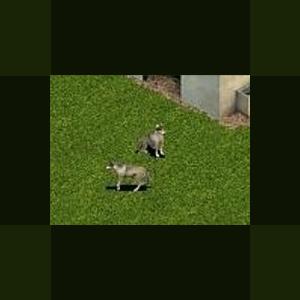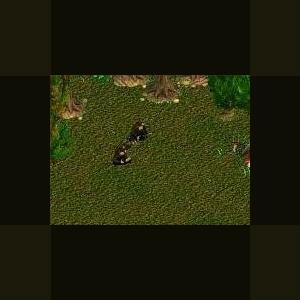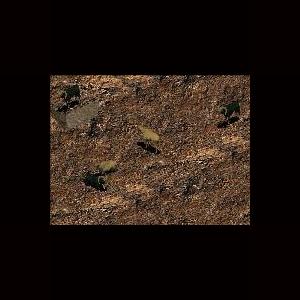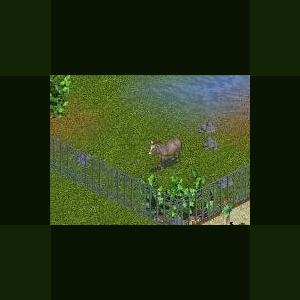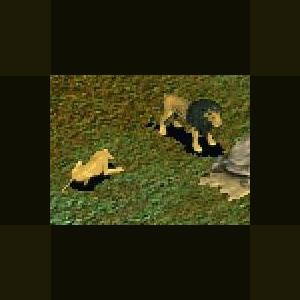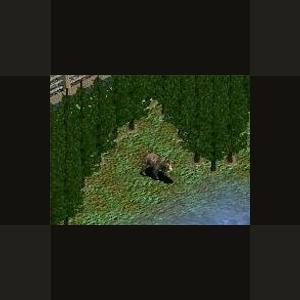279 files
-
Tsavo Lion by Ghirin
By Guest
Tsavo Lion by Ghirin
The male lions of Tsavo are famous for either lacking manes or having very short ones.
These lions are also known for their agressiveness towards humans and livestock.
References:
www.fieldmuseum.org
www.nationalgeographic.com
Updated 2010-11-11
Just to save space with less in zip and smaller image.
Nothing new.
336 downloads
0 comments
Updated
-
Pygmy Hippopotamus by Ryno
By Guest
Pygmy Hippopotamus by Ryno
The Pygmy Hippopotamus (Choeropsis liberiensis or Hexaprotodon liberiensis) is a large mammal native to the forests and swamps of western Africa
Updated 2010-11-05
Just to save space with less in zip and smaller image.
Nothing new.
607 downloads
Updated
-
Arabian Wolf by Ghirin
By Guest
Arabian Wolf by Ghirin
The Arabian wolf (Canis lupus arabs) is an endangered subspecies of wolf from the Middle East. Unlike northern wolves, Arabian wolves live in pairs or small groups.
Reference:
www.Wikipedia.com
Created by Ghirin 2006
Updated 2010-10-30
Just to save space with less in zip and smaller image.
Nothing new.
471 downloads
0 comments
Updated
-
Cuvier's Dwarf Caiman by Ghirin
By Guest
Cuvier's Dwarf Caiman by Ghirin
Cuvier's dwarf caiman (Paleosuchus palpebrosus) is the smallest living species of crocodillian.
It is known for its heavily ossified armor.
References:
www.wikipedia.com
http://www.flmnh.ufl.edu/cnhc/csl.html
Updated 2010-10-30
Just to save space with less in zip and smaller image.
Nothing new.
Updated August 18, 2018 by Cricket so that screenshot would show up again.
435 downloads
0 comments
Updated
-
Black Jaguar by Ghirin
By Guest
Black Jaguar
Author: Ghirin
Jaguars, like leopards, have a melanistic form. In these jaguars, the light-colored fur between and inside the rosettes is dark. Even though the coat may look solid black from a distance, the basic rosette pattern is still present and can often be seen when the animal is in angled light.
Black jaguars, like black leopards, are more common in the more densely forested parts of their range.
They are compatible with non-melanistic jaguars.
Created by Ghirin
Updated 2010-10-30
Just to save space with less in zip and smaller image.
511 downloads
Updated
-
Eurasian Elk by Ghirin
By Guest
Eurasian Elk
Author: Ghirin
http://www.zoo-tek.com/forums/index.php?download=110
The majestic elk is the largest member of the deer family, measuring up to 7.5 feet in height. They can be found throughout the northern forests of North America, Europe, and Russia. Male elk (bulls) are much larger than female elk (cows); a large bull can weigh up to twice as much as a typical cow. During most of the year, the bull is distinguished by a magnificent set of antlers, having an average spread of 4 to 5 feet and as many as 30 tines. The shape of these antlers is unique to the individual. Mature males shed their antlers once a year in the winter and replace them with larger ones. Other characteristics of the elk include large muscular shoulders, a "bell" or dewlap of skin under the chin, a drooping nose, long legs, and a small tail.
Elk are a very hardy and adaptable species, wintering successfully in some of the coldest regions of the world. There is some confusion surrounding this animal's name: whereas an elk is always an elk, an elk is called a moose in North America, and an elk in America is a different species known in Europe as a red deer.
In the wild, elk occupy a wide variety of different habitats, ranging from densely forested areas, to swampy areas around bogs and streams, to open forest-tundra regions. A typical elk habitat might be a forested area that contains a water source and abundant plant life. Elk enjoy munching on a wide variety of foliage, with a particular fondness for willow. An adult elk consumes an average of 44 pounds of plants a day, but will eat more in spring and autumn. In the autumn, they can consume as much as 130 pounds a day.
Elk have poor vision, which is compensated for by acute hearing and smell. They are swift runners, reaching speeds of up to 35 miles an hour. They are also excellent swimmers and can dive a considerable depth, having valvular nostrils, which seal upon submergence.
Elk are solitary animals, except during the rutting season. The strongest social bond is between mother and young. They do not like crowding. They will generally avoid humans, but can be unpredictable and dangerous under certain conditions. For instance, cows with calves and rutting bulls have been known to charge people, cars, horses, and even locomotives.
During the fall rut, bulls compete for mates by bringing their antlers together and shoving. Generally quiet creatures, both sexes give out a cow-like moo during this season. Elk reproduce well and can quickly fill their habitat to capacity if they are not limited by predation and hard winters. When food supplies are abundant, cows will frequently give birth to twins or even triplets. In the spring, last year's offspring will be driven off by the cow as she prepares to give birth again.
A healthy adult elk has little to fear from most animals. The two main predators of elk are bears and wolves. Many more elk fall to humans, as these animals are a favorite target for big game hunters. The primary limiting factor of elk populations is habitat. A harsh winter will greatly increase elk mortality.
*Inspired by the Zoo Tycoon Brains Trust. (http://www.geocities.com/professorpaul1/home.html)
Created by Ghirin 2003
Updated 2010-11-03
Just to save space with less in zip and smaller image.
Nothing new.
298 downloads
0 comments
Updated
-
Viscuna by Ryno
By Guest
Viscuna by Ryno
The vicuña (Vicugna vicugna) is one of 2 wild South American camelids, along with the guanaco, which live in the high alpineous areas of the Andes.
Updated 2010-11-11
Just to save space with less in zip and smaller image.
Nothing new.
212 downloads
Updated
-
Cape Lion by Ghirin
By Guest
The cape lion (Panthera leo melanochaitus) was native to the mountains of the Cape region of South Africa. It was a large lion, second only to the Barbary lion of North Africa. Like the Barbary lion, the Cape lion was also known for it luxurious black mane that extended beyond the shoulders and fringed the belly.
After the arrival of European settlers, the Cape lion was hunted to extinction in the wild, with the last wild lion killed in 1865.
Lions descended from Cape lion may exist in zoos around the world and a South African Zoo is trying to establish a captive population of these lions in South Africa.
References:
The Doomsday Book of Animals. Day, 1981.
http://news.nationalgeographic.com/news/20...6_capelion.html
Updated 2010-10-30
Just to save space with less in zip and smaller image.
452 downloads
0 comments
Updated
-
Australopithecus Afarensis by ZTB
By Guest
Australopithecus Afarensis by Zoo Tycoon Boy (ZTB)
Add this early hominid to your zoo now!! <img src='http://zootekphoenix.com/forums/public/style_emoticons/<#EMO_DIR#>/Yess_.gif' class='bbc_emoticon' alt=':Yess_:' />
Updated 2010-10-30
Just to save space with less in zip and smaller image.
Nothing new.
350 downloads
0 comments
Updated
-
White Tiger Of The West by Ghirin
By Guest
White Tiger of the West by Ghirin
The White Tiger is one of the four legendary creatures of China.
The others are the Black Tortoise, Azure Dragon, and Red Bird. Each animal is associated with a color, season. geographic direction, and element. The White Tiger is associated with metal, autumn, white jade, and virtue.
If a tiger lives to be 500 hundred years old, it begins to turn white starting with the tail.
Reference:
www.wikipedia.com
http://www.onmarkproductions.com/html/ssu-ling.shtml#tiger
Created by Ghirin 2008
Updated 2010-11-11
Just to save space with less in zip and smaller image.
Nothing new.
235 downloads
0 comments
Updated
-
North China Leopard by Ghirin
By Guest
North China Leopard
Author: Ghirin
The North China leopard (Panthera pardus japonensis) dwells south of the Amur valley region and is a separate subspecies from the nearby Amur leopard. It is a large leopard and its fur tends to be a darker orange than other leopard species. This leopard prefers mainly coniferous habitat with some brown stone and deciduous floor.
The North China leopard's current population is believed to number 2500 in the wild and 100 in zoos. The animal is listed as endangered.
Created by Ghirin 2003
Updated 2010-11-04
Just to save space with less in zip and smaller image.
Nothing new.
543 downloads
0 comments
Updated
-
Bergman's Bear by Ghirin
By Guest
Bergman's Bear by Ghirin
Bergman's bear is a cryptid bear was first identified in the Kamchatka region of Siberia by Zoologist Stan Bergman.
This bear has dense black fur and is very large.
Updated 2010-10-30
Just to save space with less in zip and smaller image.
Updated August 18, 2018 by Cricket so that screenshot would show up again.
214 downloads
0 comments
Updated
-
Stones Sheep by Ghirin
By Guest
Stones Sheep
Author: Ghirin
http://www.zoo-tek.com/forums/index.php?download=153
Stone’s sheep (Ovis dalli stonei) is one of the two subspecies of North American thinhorn sheep; the other subspecies is Dall’s sheep (Ovis dalli dalli). The major distinction between Stone’s sheep and Dall’s sheep is color: Stone’s sheep may be grey, brown, or black while Dall’s sheep is well known for its white fur. In both subspecies, the horns of the ram are less massive than those of the bighorn sheep, thus the name thinhorn.
Although Stone's sheep are well-adapted to a range of elevations and temperatures, they prefer steep, rocky regions and are attracted by open alpine meadows containing a variety of grasses and succulent, low-growing vegetation. In captivity, the natural diet of these sheep is supplemented with alfalfa and grain pellets. In the wild, these animals will eagerly seek out mineral licks containing salt.
Gregarious animals, Stone's sheep sometimes gather in herds of over 100 individuals. In the wild, herds consist of a dominant ewe and a mixture of ewes, yearlings, and lambs. Rams travel in small bands of their own, joining the females during the mating season.
Stone's sheep are very alert and, in addition to possessing keen hearing and a good sense of smell, have remarkable vision that allows them to judge distances accurately when jumping and locating footholds. They can spot other animals moving from up to a mile away. Stone's sheep hooves are hard on the outside and soft on the inside, and so act as shock absorbers, contributing to the sheep's ability to rapidly scramble up rocky terrain.
Stone’s sheep is less abundant than Dall’s sheep and has a smaller distribution, ranging from the British Columbian/Yukon border into the central Yukon.
Created by Ghirin 2003
Updated 2010-11-06
Just to save space with less in zip and smaller image.
Nothing new.
279 downloads
0 comments
Updated
-
Arctic Glacier Bear by Ghirin
By Guest
Arctic Glacier Bear by Ghirin
The glacier bear is a rare color phase of the American black bear.
Glacier bears are various shades of blue-gray and are found in southeastern Alaska, northwestern British Columbia and the southwestern Yukon Territory. The undercoat of glacier bears is blue-black and the outer guard hairs are white with silver tips. The blue-gray color serves as camouflage against a backdrop of frozen ice.
By Ghirin 2008
Updated 2010-10-30
Just to save space with less in zip and smaller image.
Nothing new.
381 downloads
0 comments
Updated
-
Brown Alpaca by Ghirin
By Guest
Brown Alpaca by Ghirin
The alpaca (Lama pacos), a relative of the llama, is a domesticated camelid from the Andes Mountains of South America.
Unlike the llama, the alpaca has been bred for its wool and is much smaller than the llama. The wool of the alpaca is among the finest in the world, bested only by that of the vicuna and certain breeds of goat.
Alpacas come in two wool varieties, suri and huacaya. The wool of the suri alpaca is finer and straighter than that of the huacaya. It falls in locks along the sides of the suri alpaca. The huacaya alpaca is more common than the suri; its wool is crimpy and gives the huacaya a "teddy bear" appearance. The wool of either variety comes in several colors, from white to black.
The peoples of the Andes domesticated the ancestors of the alpaca approximately 5000 years ago and these animals were used as a source of wealth.
*Inspired by the Zoo Tycoon Brains Trust at the Zoo Tek Zoo Tycoon Forums.
References:
http://alpacaplanet....lpacas_FAQ.html
http://www.alpaca.com/thealpaca.cfm
http://www.americasa...outalpacas.html
http://www.llama-llo...id_history.html (excellent picture)
Walker's Mammals of the World, Nowak, 1999.
Updated 2010-10-30
Just to save space with less in zip and smaller image.
153 downloads
0 comments
Updated
-
Springhare by Ghirin
By Guest
The springhare (Pedetes capensis) is a large rodent that resembles a small kangaroo. It is found south of the central African rainforests and in East Africa in savannah habitats.
Springhares are mainly nocturnal. They may be found singly or in pairs. Favored foods include grains and grasses.
Created by Ghirin 2005
Updated 2010-11-06
Just to save space with less in zip and smaller image.
Nothing new.
312 downloads
0 comments
Updated
-
MacFarlane Bear by Ghirin
By Guest
MacFarlane Bear by Ghirin
MacFarlane's bear is large cryptid bear from the Canadian Northwest Territories.
This bear is known from a buff-colored pelt and a skull. Both were sent to the Smithsonian Institution in Washington, DC.
The exact nature of MacFarlane's bear is unknown. It may be an extinct species or an aberrant form of brown bear.
Reference:
www.cryptozoology.com
www.wikipedia.co
Updated 2010-11-03
Just to save space with less in zip and smaller image.
Nothing new.
252 downloads
0 comments
Updated
-
Black Cat by Ghirin
By Guest
Black Cat
Author: Ghirin
In the USA, some people think that black cats are unlucky. They are a traditional symbol of Halloween.
Updated 2010-10-30
Just to save space with less in zip and smaller image.
317 downloads
0 comments
Updated
-
Dryopithecus by Ghirin
By Guest
Dryopithecus fontani
Author: Ghirin
Dryopithecus fontani was the European species of Dryopithecus. Other remains of Dryopithecus species have been found in Africa. This fossil ape was present in Europe during the Miocene era.
*Inspired by the Zoo Tycoon Brains Trust at the Zoo Tek Evolved Forums.*
Updated 2010-10-30
Just to save space with less in zip and smaller image.
Nothing new.
190 downloads
0 comments
Updated
-
Great Plains Wolf by Ghirin
By Guest
The Great Plains wolf (Canis lupus nubilus) is a subspecies of gray wolf that used to roam the
central grasslands of North America. This wolf, also known as the buffalo wolf,
was thought to be extinct, but currently the wolves of Michigan, and Minnesota are considered to be
members of the subspecies.
References:
http://www.lioncrush...l.asp?animal=35
http://en.wikipedia....eat_Plains_Wolf
Created by Ghirin 2008
Updated 2010-11-03
Just to save space with less in zip and smaller image.
Nothing new
339 downloads
0 comments
Updated
-
Morotopithecus Bishopi by Ghirin
By Guest
Morotopithecus bishopi by Ghirin
Morotopithecus bishopi was an early species of ape.
The fossils of this large-bodied ape were found in Miocene strata in Uganda. The fossils show some of the earliest indications of ape-like locomotion.
References:
http://www.johnhawks.net/weblog/fossils/apes/morotopithecus/
Updated 2010-11-03
Just to save space with less in zip and smaller image.
Nothing new.
282 downloads
0 comments
Updated
-
Argali by Ghirin
By Guest
Argali by Ghirin
The argali (Ovis ammon) is the largest species of wild sheep in the world.
Distinct populations of argali are found throughout the highland regions of central Asia, including nations such as Mongolia, China, and Kazakhstan.
Like other wild sheep, argalis live in herds segregated by gender. Females will separate from the herd prior to birth and returns a few days afterward with her lamb.
Argalis vary in color based on location, but the basic color is grayish brown.
Inspired by the Zoo Tycoon Brains Trust at the Zoo Tek Forums.
Reference:
http://www.ultimateungulate.com/Artiodactyla/Ovis_ammon.html
Created by Ghirin 2005
Updated 2010-10-30
Just to save space with less in zip and smaller image.
Nothing new.
340 downloads
0 comments
Updated
-
Spanish Mustang by Sundance
By Guest
Spanish Mustang by Sundance
A beautiful Spanish Mustang
The true Spanish Mustang is a direct descendant of the horses brought to the New World by the early Spaniards. Confused by many with the feral horses currently managed by the Bureau of Land Management (B.L.M.), there is a vast difference in both appearance and ancestry. Columbus, on order from the Spanish throne, commenced bringing the first Spanish horses to the New World on his second voyage. Thereafter, each ship headed for the New World, by order of the Crown, carried breeding animals of choice Spanish stock. Breeding farms were set up in the Caribbean and subsequently in Mexico. Breeding farms such as the one operated in Sonora, Mexico by Padre Eusebio Kino, a Jesuit priest, produced stock, including horses, which were placed with each group of Christianized Indians as Kino expanded his efforts further and further north. The Apaches, never falling under the spell of the Church, ravaged and pillaged these little "visitas" taking stock at will. They also plundered deep into Mexico allegedly as far as Mexico City. Their goal - well-bred and trained Spanish horses from the Mexican estancias. Through trade of these valuable horses northward to other tribes the Apaches became one of the primary methods of spreading the Spanish horses over the west. Over the years horses escaped, were lost or stolen and many became feral, roaming all over the west. Eventually they numbered in the hundreds of thousands, closely related to the horses maintained by some of the Indian tribes; indeed, they were basically the same horses
Updated 2010-11-06
Just to save space with less in zip and smaller image.
Nothing new.
241 downloads
0 comments
Updated
-
Barbary Lion by Ghirin
By Guest
Barbary Lion by Ghirin
The Barbary lion (also known as the Atlas Lion) was among the largest of all lions. Its scientific name, Panthera leo leo, means that this lion was used as the original type that all other lions were judged by. One of its best known features, the huge shaggy mane of the male, was dark and could extend halfway down the back and formed a characteristic fringe of belly fur. The lion was also described as having a “dusky ochery” color.
Barbary lions once roamed all of the coniferous forests of North Africa. They were heavily hunted by the ancient Romans for the arena. Continued hunting, combined with habitat loss led to the extinction of the Barbary lion in the wild in 1922.
Some believe that Barbary lion genes might still exist in captive lion populations and the Barbary lion might be reconstructed through selective breeding.
References:
http://www.barbarylion.com/
The Doomsday Book of Animals by David Day, 1981
Created by Ghirin 2003
Updated 2010-10-30
Just to save space with less in zip and smaller image.
Nothing new.
549 downloads
0 comments
Updated
-
Syrian Bear by Ghirin
By Guest
Syrian Bear
Author: Ghirin
Syrian bears are small-sized brown bears native to the Levant and southwestern Asia. Very few exist in the wild and the species maybe extinct there; however, Syrian bears are found in zoos around the world.
Many authorities do not consider the Syrian bear a true subspecies, but it is sometimes referred to as Ursus arctos syriacus.
The Syrian bear is thought to be the bear mentioned in the Bible.
Updated 2010-11-06
Just to save space with less in zip and smaller image.
Nothing new.
256 downloads
0 comments
Updated

